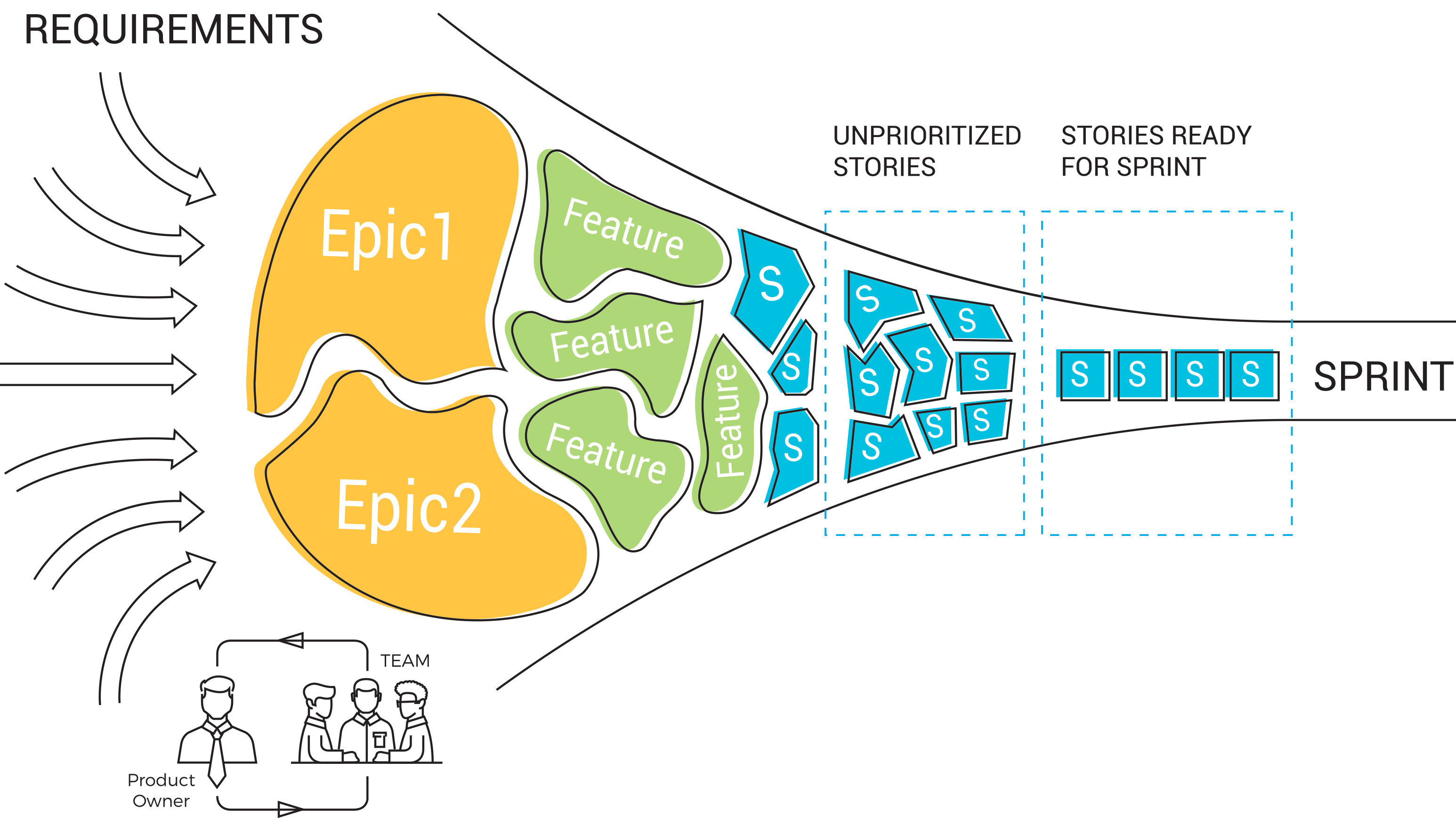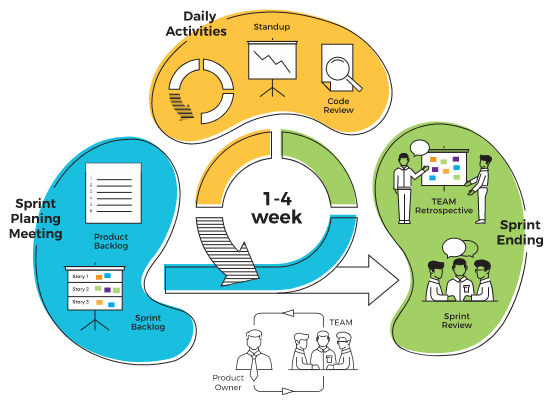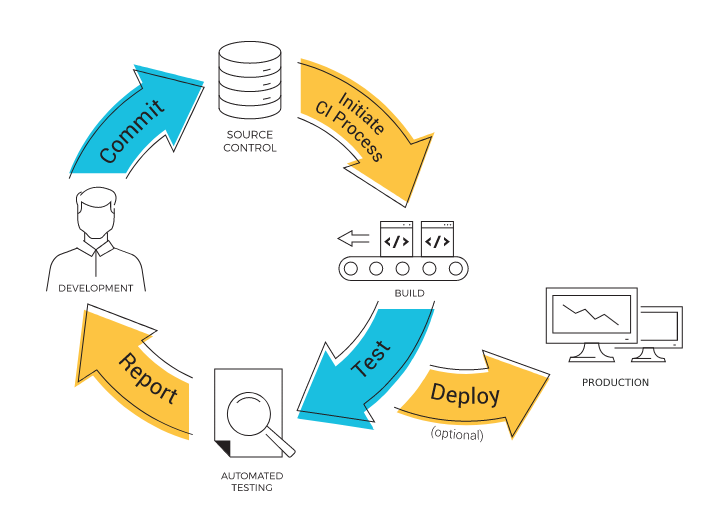How do we do it?
As a strong believers in the values propagated by the Agile Manifesto we are continuously inspecting, and improving our technical and personal skills. Knowing that frameworks (eg. SCRUM, Kanban, etc.) can limit efficiency, we are open-minded to incorporate any common sense improvement. Based on our previous experience, some of our developed best practices are presented below.



